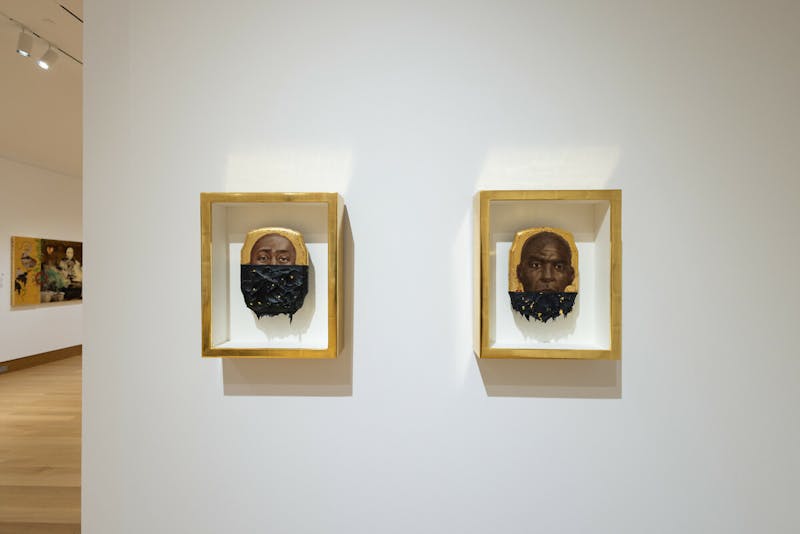On April 25, the Hood Museum welcomed Titus Kaphar for an Artist Talk on his work. The Michigan native discussed his artwork and life stories — exploring topics including his experiences as an artist, learning differences, lack of opportunity in under-resourced communities and police brutality.
Kaphar’s talk was featured as part of the traveling exhibition, “Gilded: Contemporary Artists Explore Value and Worth,” which the Hood is displaying from February 8 to June 22. The Gilded exhibit currently has four works from Titus Kaphar’s “The Jerome Project” — which discusses the mass incarceration of Black men — on display, according to the Hood Museum website.
In his work, Kaphar aims to bring hope to those struggling with their place in life.
“What I hope, in the context of my conversations, is my experience in the world will give [the audience] hope based on the idea that where you start in life doesn’t dictate how it ends,” Kaphar said. “You have the ability to change your destiny.”
Kaphar said he began the “The Jerome Project” after searching his father’s name online, where he found his criminal record — along with the police photographs of 99 other Black incarcerated men bearing the same name as his father. Kaphar said he had previously cut contact with his father at 15 years old, before Kaphar’s father reached out to him when he entered his forties.
“I hope that the paintings that I make open up opportunities for other people to contemplate their own personal relationship to the issue of incarceration,” Kaphar said. “Whether that’s a family member, or even themselves that have been in that situation, if that is a conversation that comes as a result of [my art], and that conversation leads to progress in the issue — that would be extraordinary.”
Kaphar added that he hopes students will be excited by “The Jerome Project.”
“I’m less interested in what I want people to think and experience of the work and more interested in them telling me what they think that is exciting, because that’s always a surprise,” he said.
In his lecture, Kaphar also discussed the way in which the grading system he encountered during his graduate program at the Yale School of Art made him reconsider the control he has over the interpretation of his work.
Kaphar said he was frustrated by his professors’ attempts to interpret his work, since he was unable to discuss its meaning during the grading process. This forced him to learn, however, that he will not always be able to explain the meaning of his paintings to his audience, he said.
Hood curator of collections Ashley Offill said she believes it is important for students to see an artist that promotes social justice through their artwork.
“Titus Kaphar is an especially great example of the ways in which artists can push for change, push for awareness [and] can open up and have conversations across bridges and areas that maybe wouldn’t usually connect,” Offill said.
Offill said the Gilded exhibition uses art as a tool to facilitate conversations about complex subject matters. She added that it is unusual for the Hood Museum to bring in artists from outside the Upper Valley, such as Kaphar.
She also said the Artist Talk was a campus-wide effort.
“[The Hood staff] was able to get a lot of different partners across campus, both departments and centers, that helped kind of support the event and communicate that this is not just an art event, but it is something that’s bigger across campus,” Offill said.
The Artist Talk also brought individuals from neighboring communities to the Hood. Maria Piasecki, a high school American literature teacher at Sharon Academy in Sharon, Vt., said she was brought to tears during the Q&A portion of the Artist Talk.
“There’s a wholeness to what he’s creating,” Piasecki said.
As an educator, Piasecki said she believes the theme of Gilded is valuable for learning communities, such as Dartmouth, to discuss.
“[Gilded] is such an important idea in American history,” she said. “There was an old Gilded Age and in a lot of ways we’re in a new one of what is shiny on the surface versus the truth behind all. And if there’s anything that Titus Kaphar’s work does, [it] is [that] it asks about what’s behind all of that.”

